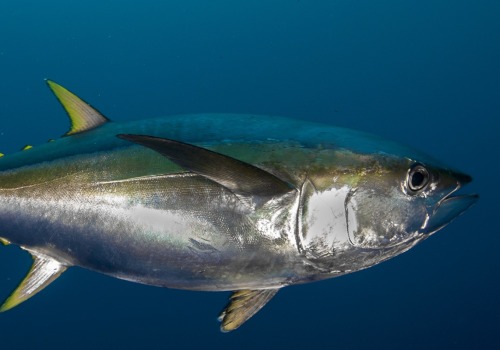The daily retention limit is now three fish per vessel, per day, for large, medium or giant bluefin tuna (73 or more). California's limit on bags of bluefin tuna is 2 per boat per day, but you can't have more than 20 fish on board either. Fishing directed to the east coast produces relatively small yields of school-age fish and medium-sized bluefin tuna, and recreational fishing makes up most of the catch. Currently, commercial fisheries can catch and sell three large bluefin tuna per trip, while recreational fishermen can keep one bluefin tuna per day.
While the overall figures do not reflect the total value of the seven species, they provide a useful estimate of the contribution of commercial tuna fishing to the world economy. Great tunas have been a visible part of the culture and economies of Mediterranean and Japanese societies for much of recorded history. Since the Pacific is the source of more than half of landings and revenues from global tuna fisheries, preventive management must be one of the main priorities of this region. However, along with these enormous volumes, comes a relatively low price per metric ton, compared to larger tuna species.
Despite some similarities, such as the ability of most tunas to regulate their body temperature (unlike most other fish), there are important biological differences between these species. Albacore tuna, labeled white tuna when preserved in North America, is almost exclusively used as a slightly more expensive alternative to canned bluefin tuna, but prices are nowhere near those of canned yellowfin. This report represents the first attempt to develop a rigorous estimate of the global value of tuna fisheries. It is likely that the slightly lower proportion of the final value relative to the spring value is due to retail competition from hand-caught tuna of the same species.
Massachusetts bluefin tuna bag limits are federally managed by NOAA and are restricted to 2 bluefin tuna specimens of 27 to 47 individuals per boat per day and 1 tuna between 47 and 73 per ship per day. While they occupy a privileged position in the food web, young tunas are also important for larger predators, such as sharks, whales and even other tunas. Together, stir-fried tuna, bigeye tuna, yellowfin tuna, Atlantic bluefin tuna, Pacific bluefin tuna and southern bluefin tuna1 inhabit all tropical and temperate waters of the Earth's oceans and support artisanal and industrial fishing wherever they exist. Pacific bluefin tuna has less stringent regulations and states have the authority to set limits and regulations for bags.
I'm also going to simplify this debate by using only the last two seasons and the data collected by the American Bluefin Tuna Association as samples. Bluefin tuna migrations bring spawn-age tuna of at least nine years old to the Gulf from January to June. For example, the Pacific Ocean is home to the largest tuna fishing areas in the world, making this region the one that contributes the most to the total value of global sales.




Leave Message